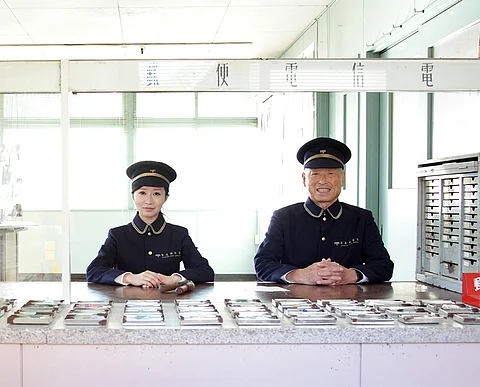
- Destinations
- Experiences
- Stay
- What's new
- Celebrating People
- Responsible Tourism
- CampaignsCampaigns
- Subscribe
- Buy Now

The bucolic Awashima Island of Japan, just off Kagawa Prefecture, hides away an extraordinary, if peculiar, destination that is as deeply moving as it is strange, namely, the 'Missing Post Office'. Here, the famous psychoanalysis theory that the letter always reaches its destination finds utterance. It's one such post office where letters with no possible addressee find a home. The affair isn't an official postal service but an emotional sanctuary where people shoot in handwritten epistles to those they've loved and lost, their future selves, estranged love or even cherished objects. Founded in 2013, the place was an art installation by Saya Kubota during the Setouchi Triennale and was housed in a wooden building that once served as Awashima's official post office until 1991. Let us delve into this novel address and find out all that may interest a traveller.
Speaking about the concept, Kubota described her inspiration as akin to messages in bottles washed ashore—a vision evoked by debris drifting onto the island's beaches. It was Katsuhisa Nakata, a former island postmaster, who volunteered to maintain the installation after its festival run. Ever since then, the post office, so to speak, has remained open for two days each month, inviting the public to leave cards, postcards, letters and other dispatch addressed to anyone beyond reach—and anyone who might someday find them.
Once you enter this post office, you will find 100 metal mailboxes suspended midair like lanterns, each gently clinking as visitors rotate them—simulating the sound of waves that symbolises the letters' symbolic drift ashore. Often quipped as the post office for the "undeliverable", it echoes the themes of grief, longing, memory and sadness. To much surprise, with a tally of 10-20 letters daily, the post office has understandably received over 55,000 messages since its inception.
As something that can now be seen as a tradition, the post office opens on the second and fourth Saturdays of each month briefly from 1 pm to 4 pm beckoning visitors to write new messages and peruse the existing ones. There's no privacy—it remains unclear which box contains which letter, promoting serendipity as an affective element in discovery. It is solely on a visitor's discretion to sense whether a message is meant for them, after which they may proceed to procure it with due permission.
Some of the emotional examples from the site come in the form of letters from a grieving mother to her deceased daughter’s spirit, updating on her children’s schooling and apologies for what she felt were parental failings. On another occasion, a writer was found apologising to an unborn child; each message is a private revelation momentarily transformed in communal empathy.
Now completely solidified beyond its art-festival fixture, the Missing Post Office exists at the intersection of archive, therapy and art, conjuring thoughts of the Western Dead Letter Offices but rooted in personal narrative rather than postal error. Its address—c/o The Missing Post Office, 1317-2 Takumacho Awashima, Mitoyo City, Kagawa Prefecture, 769-1108—offers a tangible yet metaphorical home for drifting words.
Nakata, now nonagenarian, acts as the postmaster of memory. On open days, he gently rings letters with a stamp, encourages reading, and engages with visitors—some weep, others reflect quietly. Each visitor carries a piece of someone else’s story back to their lives.
Awashima is accessible by a 15-minute ferry from Suda Port on the mainland, with boats operating approximately eight times daily. Once ashore, it’s a brief walk or bike ride to the site. Admission costs JP¥300, supporting upkeep. Visitors may also purchase “posting sets” there and compose letters on the spot.
The Missing Post Office offers profound insights into the human desire for connection, belonging, mourning and remembrance. It transcends conventional therapy or memorial spaces by inviting active participation--invoking vulnerability, contemplation and empathy all in a place where no words are truly lost; every letter reaches its destination even in the virtual absence of an address. This seemingly quaint installation reflects Japan's cultural reverence for memory, perhaps echoing simpler acts of mourning—even as it pioneers a novel form of collective healing.
In a world of digital immediacy, Japan’s Missing Post Office provides a quiet, poignant reminder: some things are too precious for direct messages and emails, and some feelings too deep for long calls. Here, letters transcend postage to become vessels for the heart—quiet testimonies that drift, wait, and sometimes find a home long after a name fades into silence.
